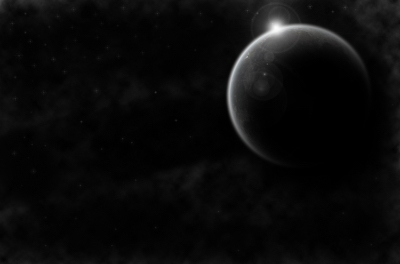 Welcome back everyone — and to a Special Weekend Edition at that! You see on Sunday, September 13 we have not only a New Moon, but a partial solar eclipse as well. Now, this event will not be visible in the Northern hemisphere because the moon will be located on the same side of the Earth as the Sun. However, this does mean we will have a wonderful opportunity to observe celestial objects in the night sky that are normally obscured from view by the moon.
Welcome back everyone — and to a Special Weekend Edition at that! You see on Sunday, September 13 we have not only a New Moon, but a partial solar eclipse as well. Now, this event will not be visible in the Northern hemisphere because the moon will be located on the same side of the Earth as the Sun. However, this does mean we will have a wonderful opportunity to observe celestial objects in the night sky that are normally obscured from view by the moon.
And, if you’ve ever wondered what the different phases of the Moon actually are — and what happens when — here’s how it works.
To begin, the Moon revolves around the Earth — and as this movement takes place, the Moon appears to change its shape in the sky. It takes our Moon about 29.5 days to complete its cycle around the Earth. And, during this time, the Moon moves through eight different phases.
Now, each of these eight lunar phases refers to the amount of the Moon we can see from Earth. And that is determined by how much of the Moon is lit up by the Sun.
For example, the lunar cycle begins with the New Moon — when we only see the Moon as a sliver or crescent in the night sky. It then appears to grow as it goes through its “waxing” phases to become the Full Moon. From here, it enters its “waning” phases in which it appears to shrink. Until finally, it returns once again to the crescent-shaped New Moon before vanishing for a few days and beginning the cycle all over again.
This interaction of the Earth, Sun and Moon have been in place and have influenced life on our planet for millions of years. We know the ocean tides on Earth are dictated by the interplay and gravitational forces of the Sun and the Moon. Indeed, science has documented that the Moon and its phases rule the flow of all fluids on planet Earth.
For example, when the Moon lines up with the Sun and the Earth we have a phenomenon called syzygy. This astronomical event happens twice during the lunar cycle – once during the Full Moon and once again during the New Moon. And, when it occurs the tidal effect is increased. This is because the Moon’s orbit at this time is at its closest proximity to the Earth. And during this time – also known as perigee – the gravitational force of the Moon can increase by as much as 50 percent!
Now, that’s interesting! And, of course, it begs the questions: “If the Moon’s gravitational pull is powerful enough to affect our planet’s oceans, won’t it affect us as well? We are physical beings made of approximately 70 percent water. If the Moon dictates the flow of fluids on Earth, doesn’t that include us?
Well, we’ve discussed some of this before. We know, for example, that the Moon can affect our circadian rhythms – or our cycles of rest and activity. The light of the Moon – especially when it’s full — can keep us awake at night resulting in fatigue, disorientation or even depression.
And, the human menstrual cycle aligns itself with the Moon’s lunar cycle – of about 28 to 29 days. Indeed, science indicates that human reproduction is influenced by the moon with the rates of ovulation and conception increasing during the Full Moon and decreasing during the New Moon. What’s more, it’s said the New Moon generates negative ions, which enhance our overall mood.
So, yes, the New Moon tonight may have some effect on our physical bodies. What’s more, throughout history the New Moon has been regarded as a symbol of new beginnings. Many cultures have seen the New Moon as an opportunity to reclaim their hopes and dreams.
Hmmm . . . well, if so, why not have some fun tonight? Make it a combination of mood, magic and science. Let’s use this New Moon to reaffirm to ourselves what we want, where we’re going and how we’re going to get there. Just as the New Moon symbolizes the beginning of another lunar cycle, let’s use it in a similar way — to symbolize a new beginning for ourselves.
So, go ahead and think of tonight’s New Moon as a blank page. Make your intentions known, speak your dreams out loud, begin that new project, make that important contact and act on that new idea. And, of course, take charge of your health! Put your thoughts into positive action. What have you got to lose?
Because, we know that overall health is a mighty combination of mental, physical and emotional well being. Let’s take the opportunity to create that balance in every way possible. And, of course while you’re at it, enjoy a beautiful evening under the stars!
Thanks for joining me, everyone. Stay in Good Health and until next time,
TAKE THE COURSE AND TAKE CHARGE!
And ladies, please read more about the very special relationship we females share with the phases of the Moon with Dr. Christiane Northrup at: http://www.drnorthrup.com/wisdom-of-menstrual-cycle/#sthash.vElM8Et9.dpuf.
Image courtesy of photokanok at FreeDigitalPhotos.net



Leave a Comment